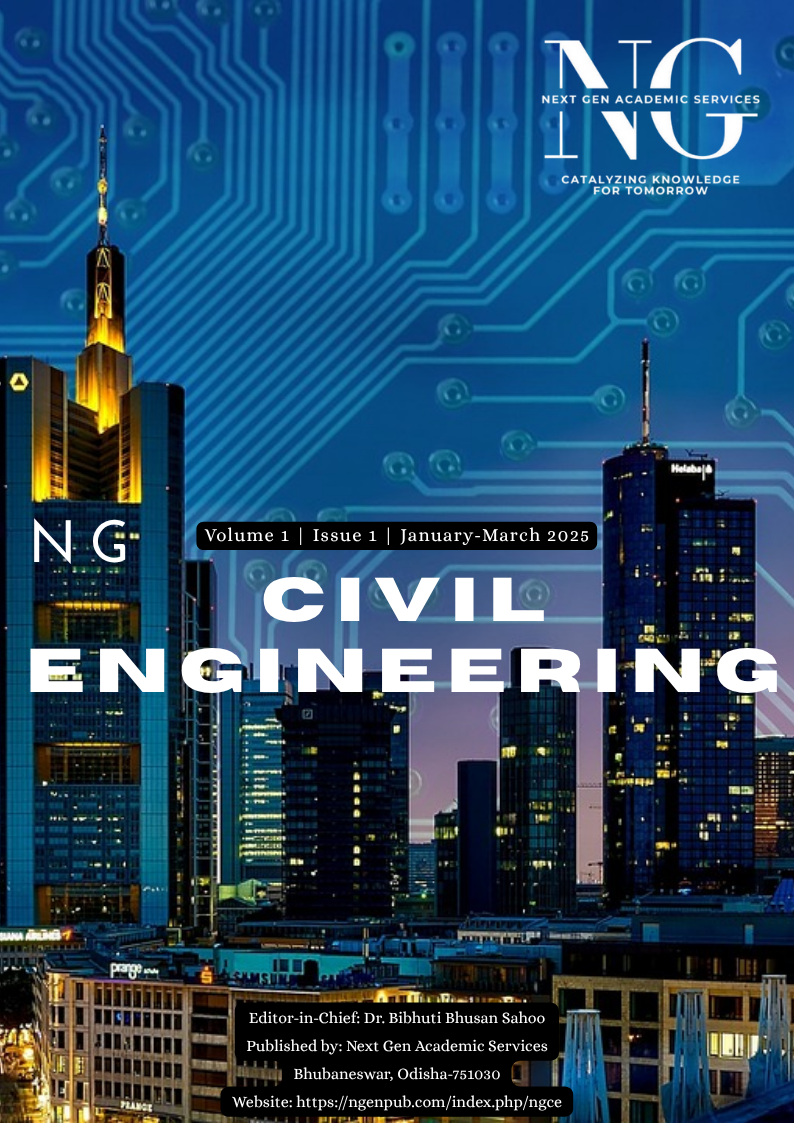Assessing the Reliability of Monthly Inflow Predictions with Monte Carlo Simulation
DOI:
https://doi.org/10.5281/zenodo.15113444Keywords:
ARIMA, Flood forecasting, Monte Carlo Simulation, Rainfall and Runoff modelingAbstract
Accurate inflow prediction is essential for effective reservoir planning and management. This study applies the autoregressive integrated moving average (ARIMA) model to forecast inflow into India's Hirakud Reservoir using a 50-year time series of average monthly inflow data. The model development process includes analyzing the autocorrelation function (ACF) and partial autocorrelation function (PACF), followed by an augmented Dickey-Fuller (ADF) test to assess stationarity. Forecasts are generated for four lead times: 6, 12, 24, and 36 months. Monte Carlo Simulation (MCS) is conducted for each period to quantify prediction uncertainty. The results show that the 6-month forecast performs best in terms of uncertainty analysis. The 50-year dataset provides a comprehensive understanding of inflow patterns, capturing both short-term fluctuations and long-term trends. ACF and PACF analyses guide the selection of ARIMA model parameters, while the ADF test ensures stationarity. MCS adds robustness to the forecasting process by accounting for uncertainties inherent in hydrological predictions. By simulating multiple scenarios, MCS helps assess forecast reliability and provides a range of possible outcomes. Overall, the study demonstrates the effectiveness of combining the ARIMA model with MCS for inflow forecasting. Shorter lead times, such as the 6-month forecast, offer more precise predictions with lower uncertainty. This information is crucial for optimizing reservoir operations and ensuring sustainable water resource management. Future research could explore integrating additional variables, such as climate indices, to further enhance predictive accuracy.
Downloads
References
Alsharif, M. H., Younes, M. K., & Kim, J. (2019). Time series ARIMA model for prediction of daily and monthly average global solar radiation: The case study of Seoul, South Korea. Symmetry, 11(2), 240. https://doi.org/10.3390/sym11020240
Amiri, E. (2015). Forecasting daily river flows using nonlinear time series models. Journal of Hydrology, 527, 1054-1072.https://doi.org/10.1016/j.jhydrol.2015.05.048
Dégerine, S. (1994). Sample partial autocorrelation function of a multivariate time series. Journal of Multivariate Analysis, 50, 294-313. https://doi.org/10.1006/jmva.1994.1044
Fashae, O. A., Olusola, A. O., Ndubuisi, I., & Udomboso, C. G. (2019). Comparing ANN and ARIMA model in predicting the discharge of River Opeki from 2010 to 2020. River research and applications, 35(2), 169-177.https://doi.org/10.1002/rra.3391
Flores, J., Engel, P., & Pinto, R. (2012). Autocorrelation and partial autocorrelation functions to improve neural networks models on univariate time series forecasting. The 2012 International Joint Conference on Neural Networks (IJCNN), 1-8. https://doi.org/10.1109/IJCNN.2012.6252470
Hamilton, J. D. (1994). State-space models. Handbook of econometrics, 4, 3039-3080. https://doi.org/10.1016/S1573-4412(05)80019-4
Harvey, A. C., Todd, P. J. J. o. B., & Statistics, E. (1983). Forecasting economic time series with structural and Box-Jenkins models: A case study. 1(4), 299-307. https://doi.org/10.1080/07350015.1983.10509355
Huang, W., Xu, B., & Chan‐Hilton, A. (2004). Forecasting flows in Apalachicola River using neural networks. Hydrological processes, 18(13), 2545-2564. https://doi.org/10.1002/hyp.1492
Ilhan, A. (2022). Forecasting of river water flow rate with machine learning. Neural Computing and Applications, 34(22), 20341-20363. https://doi.org/10.1007/s00521-022-07576-9
Kaur, J., Parmar, K. S., & Singh, S. (2023). Autoregressive models in environmental forecasting time series: a theoretical and application review. Environmental Science and Pollution Research, 30(8), 19617-19641. https://doi.org/10.1007/s11356-023-25148-9
Rath, A., Samantaray, S., Bhoi, K. S., & Swain, P. C. (2017). Flow forecasting of hirakud reservoir with ARIMA model. 2017 International Conference on Energy, Communication, Data Analytics and Soft Computing (ICECDS). https://doi.org/10.1109/ICECDS.2017.8389997
Singh, H., & Ray, M. R. (2021). Synthetic stream flow generation of River Gomti using ARIMA model. Advances in Civil Engineering and Infrastructural Development: Select Proceedings of ICRACEID 2019. https://doi.org/10.1007/978-981-15-6463-5_24





